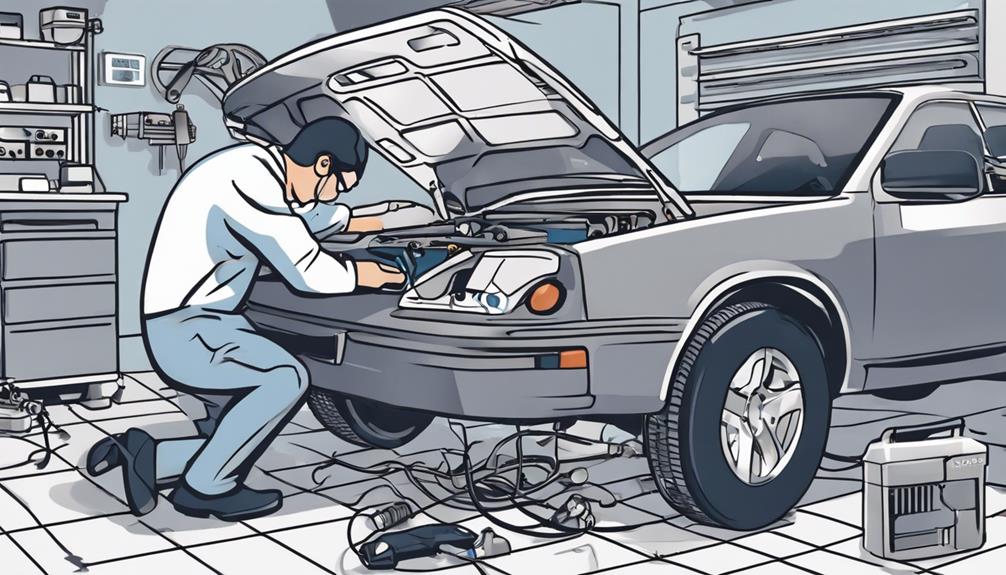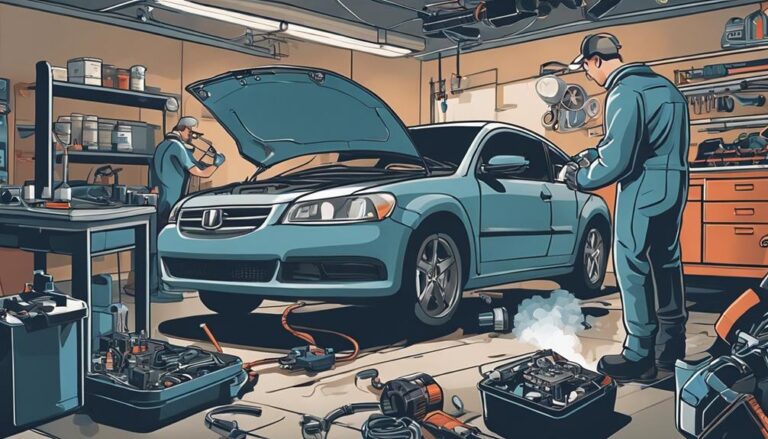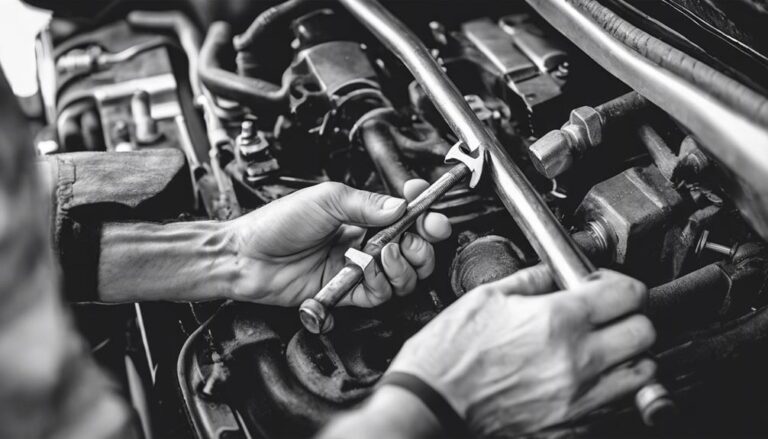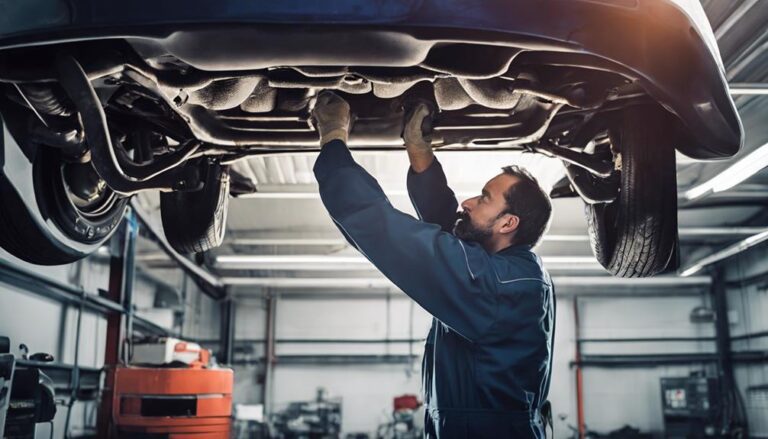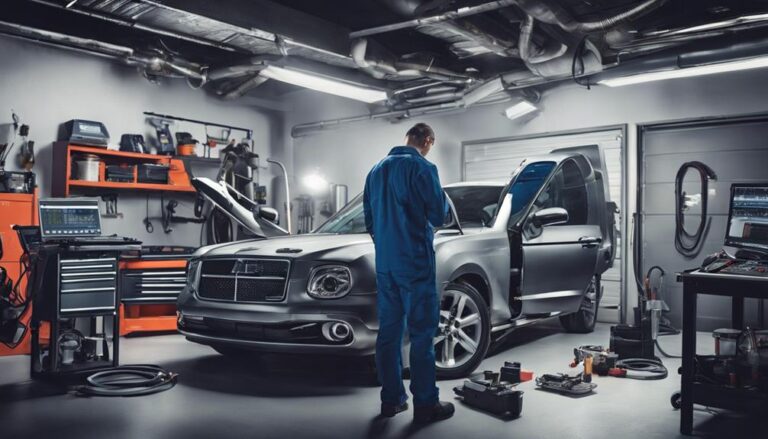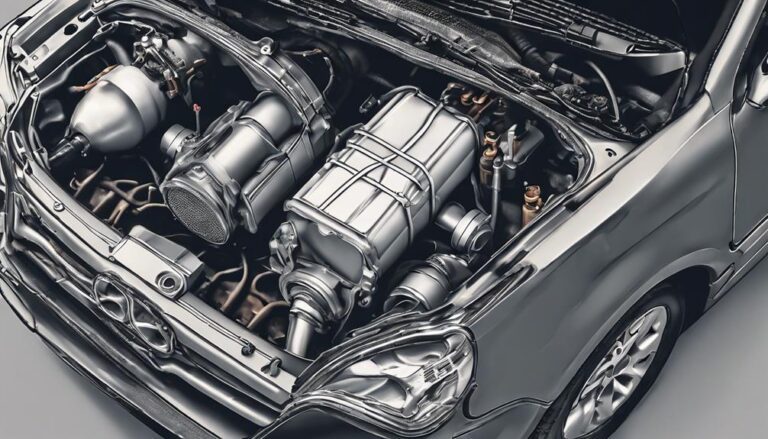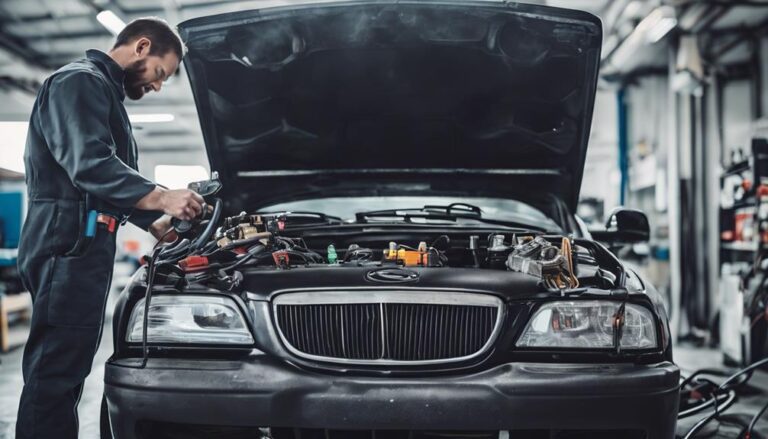5 Best Methods for Emission Control System Repairs
So, you think emission control system repairs are about as thrilling as watching paint dry?
Well, think again. These five best methods could save you from a world of trouble and keep your vehicle running smoothly.
Ready to uncover the secrets to mastering emission control system repairs and ensuring your car meets environmental standards with ease?
Key Takeaways
- Regular oxygen sensor maintenance and replacement optimize fuel efficiency and catalytic converter health.
- OBD-II scanners assist in diagnosing emission system faults accurately.
- Timely component replacements with high-quality parts are essential for system efficiency.
- Professional maintenance by certified mechanics ensures compliance and prevents costly repairs.
Common Emission System Repairs
When addressing common emission system repairs, replacing faulty oxygen sensors stands out as a pivotal step to enhance fuel efficiency and reduce harmful emissions. Oxygen sensors play an important role in monitoring the oxygen levels in the exhaust system, providing essential data to the engine control unit for adjusting the air-fuel mixture. A malfunctioning oxygen sensor can lead to decreased fuel efficiency, increased emission levels, and potential damage to the catalytic converter.
Regularly checking and replacing oxygen sensors as per the maintenance schedule is essential to guarantee top performance of the emission control systems. Diagnostic tools can help pinpoint issues with oxygen sensors quickly and accurately, allowing for timely replacements. By maintaining these sensors in good condition, you not only improve fuel efficiency but also contribute to reducing harmful emissions released into the environment.
Diagnosing Emission Control System Issues
To accurately diagnose emission control system issues, utilize an OBD-II scanner for precise identification of faults in key components like the oxygen sensor and catalytic converter. Additionally, checking for vacuum leaks is essential as they can also lead to emission system problems. Professional mechanics can offer precise diagnostics for complex issues, ensuring an accurate assessment of the system. Addressing emission system warnings promptly is vital to prevent environmental damage and costly repairs down the line.
| Emission Control System Diagnostics | |
|---|---|
| Key Components to Inspect | |
| – Oxygen Sensor | – Catalytic Converter |
| Diagnostic Tools | |
| – OBD-II Scanner | |
| Common Issues | |
| – Vacuum Leaks | |
| Professional Assistance | |
| – Precise Diagnostics | – Prompt Repairs |
Replacing Faulty Emission Components
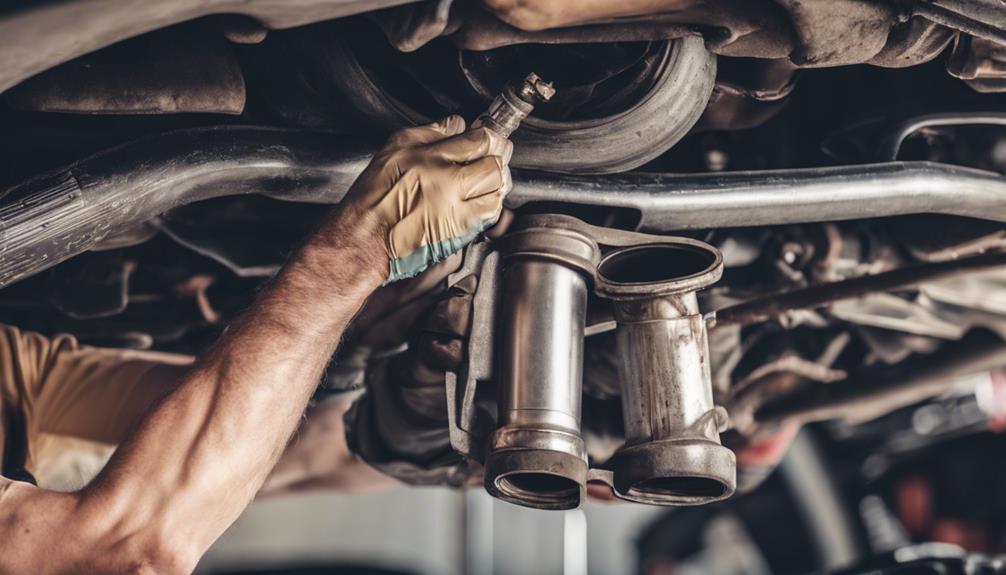
For effective maintenance of your vehicle's emission control system, timely replacement of faulty components with high-quality parts is imperative. When dealing with issues in the emission control system, it's essential to make sure that the components being replaced, such as oxygen sensors and catalytic converters, are of high-quality to maintain system efficiency.
Proper installation of these new parts is important for effective emission control and to prevent any further damage to the system. If you encounter complex problems like those related to the catalytic converter, seeking professional help for accurate diagnosis and replacement is highly recommended.
Following the manufacturer's guidelines for replacing emission components is important to guarantee proper functioning and compliance with regulations. Regularly inspecting and replacing worn-out emission components is important in keeping your vehicle's emissions control in optimal condition and avoiding triggering the Check Engine Light due to faulty parts.
Utilizing a diagnostic tool can aid in pinpointing the exact issues and ensuring precise replacement of the faulty components.
Cleaning Emission Control System Parts
Cleaning emission control system parts enhances overall vehicle performance and reduces harmful emissions by guaranteeing top functioning of key components.
Here are essential points to ponder when cleaning emission control system parts:
- EGR Valve: Reinstates engine performance, diminishes emissions, and prevents rough idling.
- PCV Valve: Guarantees proper air/fuel mixture for combustion, preventing oil leaks and engine issues.
- Catalytic Converter: Upholds efficiency in reducing harmful emissions by removing carbon buildup and contaminants.
- Air Injection System: Diminishes hydrocarbon emissions by introducing clean oxygen into the exhaust.
- Charcoal Canister: Prevents fuel vapor leaks, sustaining emission control efficiency.
Professional Emission System Maintenance
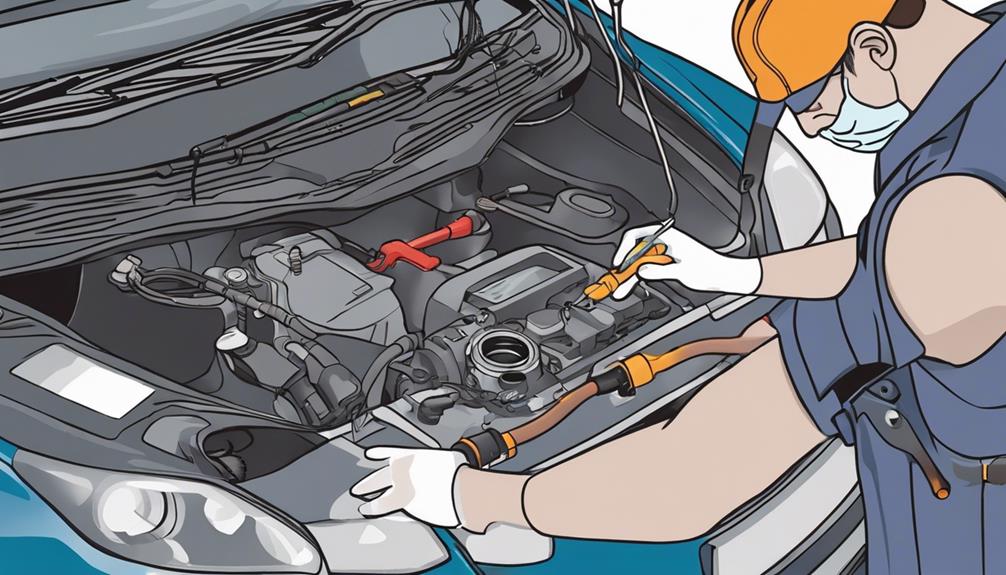
Professional emission system maintenance greatly improves vehicle performance and reduces harmful emissions through the utilization of advanced diagnostic tools and the expertise of certified mechanics. By entrusting your vehicle to professionals, you guarantee that the emission control system regulates the release of nitrogen oxides and excessive hydrocarbons, contributing to lower air pollution levels. Certified mechanics can diagnose issues like a faulty evaporative emission system or a worn-out catalytic converter promptly, preventing further damage that may impact engine performance. Additionally, they can address problems with components such as the positive crankcase ventilation (PCV) system and the gas cap to maintain peak functionality. Adhering to regulations like the Clean Air Act, professional maintenance ensures that your vehicle meets emission standards while operating efficiently. Below is a table illustrating how professional emission system maintenance benefits vehicle owners:
| Benefits of Professional Emission System Maintenance |
|---|
| Improved vehicle performance |
| Reduced harmful emissions |
| Compliance with emission regulations |
| Prevention of costly repairs |
| Optimum functioning of emission control system |
Frequently Asked Questions
How Do You Fix an Emissions Control System?
To fix an emissions control system, pinpoint common issues with an OBD-II scanner. DIY solutions include checking for loose connections, faulty sensors, exhaust leaks, and engine misfires. Seek professional help for complex problems, use diagnostic tools, and practice preventive maintenance.
How Much Does It Cost to Fix an Emission Control System?
Fixing an emission control system can vary greatly in cost, from $50 to $3,500. Factors like specific components, labor, and damage influence prices. To save money, address issues promptly and seek professional help for accurate repairs.
What Are the Methods of Emission Control System?
Emission control technology plays an important role in reducing vehicle emissions, improving air quality, and curbing pollution. Components like catalytic converters and air injection systems are essential for minimizing the environmental impact of exhaust gases.
What Does It Mean When Your Car Says Emission System Problem?
When your car says 'emission system problem,' it indicates issues like faulty oxygen sensors or catalytic converters affecting emissions. Prompt diagnostic testing is essential. Ignoring warning lights can harm the environment and engine performance. Seek professional help for complex repairs.
Conclusion
In summary, implementing proper emission control system repairs is essential for vehicle performance and environmental protection.
Did you know that a faulty oxygen sensor can decrease fuel efficiency by up to 40%?
By following the outlined methods for diagnosing, replacing, and maintaining emission components, you can guarantee that your vehicle operates efficiently while reducing harmful emissions.
Stay proactive in addressing emission system issues to keep your vehicle running smoothly and environmentally friendly.

